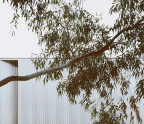
Awards for addiction are uncommon. It’s fortunate that architecture is addictive because it’s not always easy. The Gold Medal is a bonus for my addiction. I thank the Australian Institute of Architects, and in particular the award jury, for this honour, which I share with my mentors and collaborators, including my wife, Judith. It’s possible to contribute to the profession in various ways: through design, teaching, advocacy and research. I’ve had the privilege of contributing in all of these.
Outstanding contributions can be made by staff as well as the principals of architectural offices. While partners often survive downturns, employees are frequently retrenched, as I was on several occasions. Redundancies are setbacks but also opportunities. Like A. S. Hook, after whom this oration is named, I’ve spent most of my career as an employee. We both worked for the Queensland Department of Public Works, although a century apart. Employees’ contributions can be hard to identify, as demonstrated by Hook’s Queensland career, discussed below.
A. S. Hook
The career of Alfred Samuel Hook (1886–1963) has been documented by John Maxwell Freeland, Rosemary Broomham and Philip Goad.1 Hook was born in England from a long line of plasterers. His father was a builder at Bournemouth, where Hook attended the local technical college before studying architecture at the Royal College of Art in London from 1905 to 1907, under the famous Arthur Beresford Pite.
Hook practised in Bournemouth before he visited Australia and decided to stay. After working in Queensland, he moved to Sydney in 1913, to the Government Architect NSW, and later to the teaching staff of the University of Sydney. Concurrently, he worked tirelessly for the profession, including towards the formation of the Royal Australian Institute of Architects (RAIA) in 1930. He became the body’s first president and was a long-serving office bearer, often in multiple roles.
In retirement, Hook wrote a detective story, The Coatine Case. Hook designed the shipping office before moving to Brisbane, where he was associated with the comparable post office.






